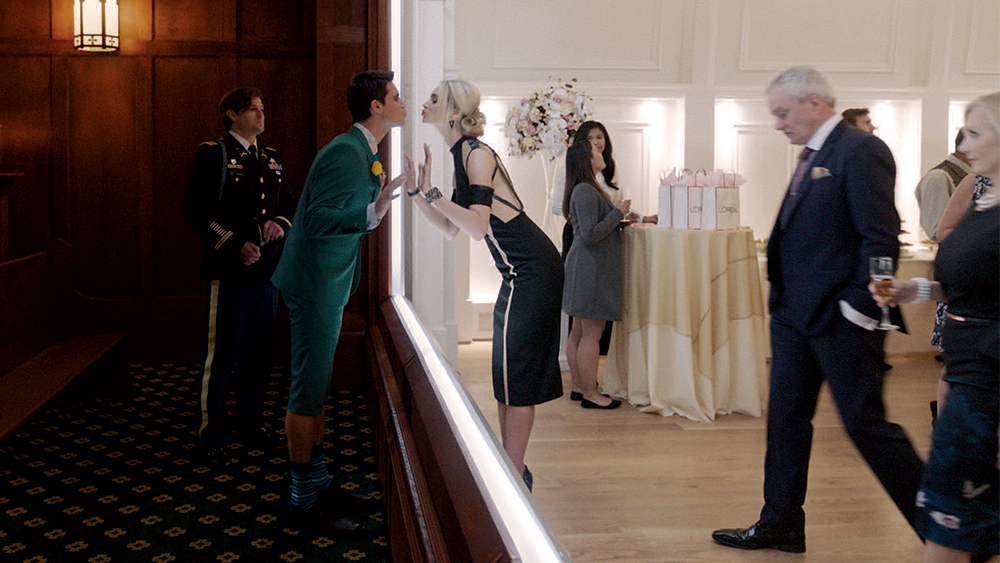How ‘Upload’s’ VFX Team Differentiated the Real World From Its Digital Afterlife
By Danielle Turchiano
LOS ANGELES (Variety.com) – Imagine a world in which technology has become so advanced the wealthy all have self-driving cars, 3D-printed food, wrist holograms with which to speak to each other from afar and the option of living posthumously in a digital afterlife.
That kind of future may feel like sheer fantasy even as some of it feels like it’s just around the corner. It’s also the world Greg Daniels (“The Office”) created with his Amazon Prime series “Upload,” debuting May 1. Tasked with making that technology seem real for both the world within the show as well as for its virtual afterlife, was the team at FuseFX.
“This crosses the lines of comedy and science fiction and the future, and it was a great challenge for us at Fuse because it shows our diversity,” says Marshall Krasser, visual effects supervisor. “If something exists out there, we had to take it up to the next level. What would be the wrist hologram phones 2.0? We had to be a little visionary.”
In “Upload,” a young app developer named Nathan (played by Robbie Amell) has his consciousness and memories uploaded into Lakeview, a ritzy afterlife community consisting of any amenity a person could want — including virtual assistants dubbed “angels” that can procure items for the residents. Also available: the ability to change the weather with a turn of a knob, talking-dog therapists and in-app purchases that range from new clothes to promotional food items (also offering product-placement potential).
The design of the “real” world in “Upload” was “a little grittier; it’s not where you want to be,” says Krasser. “So when we got into the upload land, it needed to feel a little bit more pristine, a little cleaner — like you wanted to go there because it was nicer.” But, in order to remind the audience this was a digital world, Krasser and his team built in select glitches — “freezes and stutters,” he explains.
Certain story points required Krasser and his team to get even more creative. There’s a class system in the digital afterlife not unlike the one that exists in the real world. Those who have money can pay for unlimited data and do whatever they want every month, but others are on stricter budgets. The two-gigabyte plan within Lakeview becomes an important part of the story: When a character on that plan runs out of data, he or she loses color and freezes in place — until more money is added into his or her account. But it wasn’t just a matter of laying a black-and-white filter over the actor.
“The windows [only] had blue in them,” Krasser says. The joke was that there was an unfinished, blue-screen look. “But if you wanted to pay extra, you could get the [full] view. It all comes down to pay-per-use.”
When there’s an issue with the server that houses Lakeview, everyone within the system gets temporarily downgraded to a “low-poly” (low-resolution) avatar, Krasser says. Taking inspiration from the early days of computer graphics and the Dire Straits music video for “Money for Nothing,” this sequence became “an homage to our roots — to show how we evolved,” Krasser notes. “We found the simpler we made it, the more humorous it was and the more it captivated the imagination. The thing about doing a comedy with visual effects is the visual effects aren’t just to set the scene; at times they were called upon to bring a little bit of humor, too.”
Lakeview isn’t the only digital afterlife option, and the show explores a few others in a scene in which Nathan goes “heaven shopping,” Krasser says. Characters sit in a sales agent’s office and the backdrop around them changes to the various options.
“That entire sequence was set up with two rooms. We build a normal room that we started filming in, and then right next to that was an exact match of the room but everything was blue. In order to delineate where the edges of the furniture were, we put green tape along the borders, so when you saw the final product, you saw we had a room, but it turned into a giant video display,” Krasser says.
The “heaven shopping” sequence consisted of between 120 and 140 visual effects shots alone, Krasser continues, with the overall 10 episodes of the first season featuring approximately 1,400 VFX shots.
“The variety of the work gave an opportunity that I don’t think you get that often,” Krasser observes. “It was exciting because it’s not a one-trick pony show. In essence, every shot in here was kind of like a puzzle that we had to solve.”

